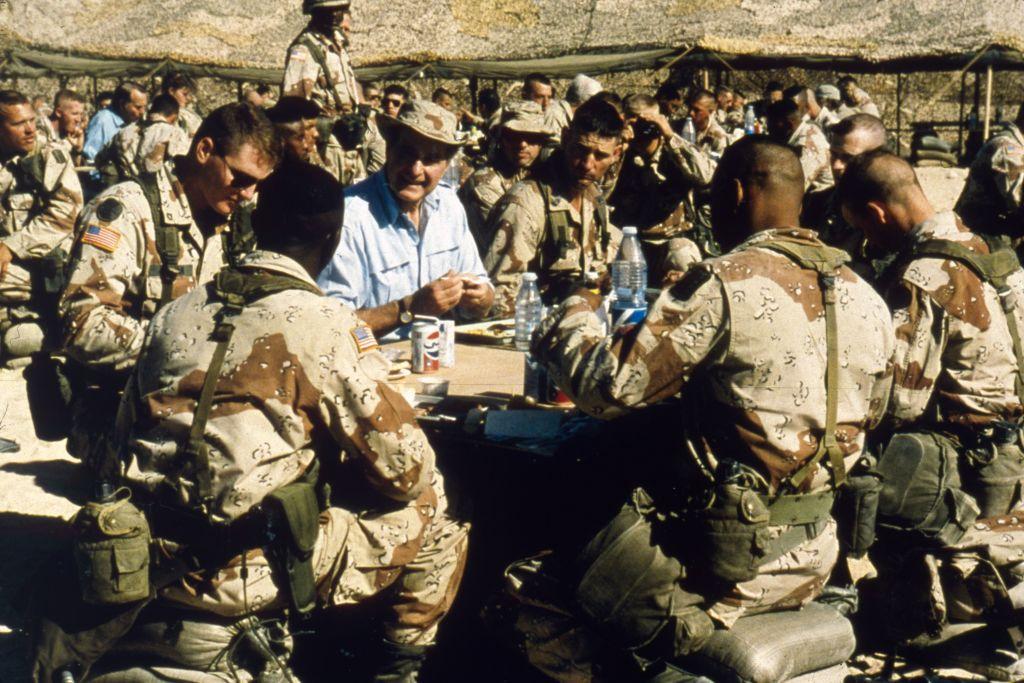We remember the service and sacrifice of our citizens who faced a massive Iraqi army 33 years ago this past week.
The Iraqi army had just come out of an eight-year war with Iran. Skilled in modern warfare and equipped with chemical weapons, Iraqi forces were confident of victory.
It all began on Aug. 2, 1990, when Saddam Hussein ordered his army to invade and occupy Kuwait. President George H.W. Bush acted swiftly and ordered American forces into the region.
By January 1991, nearly 700,000 U.S. forces, backed by 256,000 allied and coalition forces, were in the region. My own higher headquarters, the U.S. VII Corps—then based out of Stuttgart, Germany—ordered 10,000 body bags in preparation for high casualties. My regiment, the Second Armored Cavalry, was selected to lead the main attack against Hussein’s elite guards.
Meanwhile, here in Pennsylvania, a spontaneous and massive prayer movement erupted. Twenty-four churches were praying for my squadron in the Second Army Cavalry Regiment. Families at home showed support and solidarity by displaying yellow ribbons. It served as a symbol of hope to remind our brave servicemembers of the strong support at home.
On Jan. 16, 1991, after failed peace negotiations, the air campaign began. A brilliant operation of more than 1,000 hours of aerial bombardment weakened Iraqi forces in the Kuwait theater of operations.
One of the biggest concerns of the United States was that Iraq would use chemical weapons against our ground forces. We had quite a few reasons to anticipate Iraqi use of chemical weapons against us. The basis for this was the prevailing winds, which favor their use. The wind normally blows from Iraq into Saudi Arabia. This meant that if the Iraqis used chemical weapons, the wind would carry the toxins deep into the American lines.
Another reason to believe that Hussein would use chemicals was recent history. He extensively used them against both the Iranians and his own Kurdish people. This, combined with the prevailing winds, convinced us that it was inevitable that we would face a chemical attack.
The U.S.-led ground offensive was scheduled to commence on Feb. 24, 1991. Since my regiment was assigned a vital mission, we entered Iraq one day prior to the official launch of the ground war. The very instant that our tanks entered Iraq, a strange thing occurred. I noticed quite a few little dust devils all around me, which seemed very ominous. Before my very eyes, God changed the direction of the prevailing winds. This had severe repercussions on any plans that Hussein had of using tactical chemical munitions. If he used them, they would blow right back into his own troops. The miraculous thing about this wind is that it generally stayed this way until 8 a.m. on Feb. 28, the very instant that the ceasefire went into effect.
The U.S. allied and coalition forces advanced into southern Iraq and Kuwait during the next five days. On Feb. 26, 1991, the Battle of 73 Easting—named for a north–south map line in the featureless desert—was fought. The Second Armored Cavalry Division led the assault as we engaged the Tawakalna Division of the Iraqi Republican Guard, as well as elements of the 12th Iraqi Armored Division. It was known as “the last great tank battle of the 20th century.”
As the ground battle began, something strange happened. Was it another miraculous answer to our prayers? A shamal, known as a northwesterly wind blowing over Iraq, arrived and blinded our adversaries just as the tank battle kicked off in earnest. Within just 100 hours, Kuwait was liberated as the war ended at precisely 8 a.m. on Feb. 28, 1991, the same time that the wind went back to normal.
A nation was liberated, but the victory came at a great cost to our commonwealth.
Pennsylvania sent thousands of its sons and daughters to serve in Operation Desert Storm and suffered the highest loss of life in a single attack when an Iraqi Scud missile exploded at Dhahran, Saudi Arabia, on Feb. 25, 1991, killing 13 and wounding 43 members of the Greensburg-based 14th Quartermaster Detachment.
The 13 killed were Spc. Steven E. Atherton, age 26, Numine; Spc. John A. Boliver Jr., age 27, Monongahela; Sgt. Joseph P. Bongiorni III, age 20, Hickory; Sgt. John T. Boxler, age 44, Johnstown; Spc. Beverly S. Clark, age 23, Armagh; Sgt. Allen B. Craver, age 32, Penn Hills; Spc. Frank S. Keough, age 22, North Huntington; Spc. Anthony E. Madison, age 27, Monessen; Spc. Christine L. Mayes, age 22, Rochester Mills; Spc. Steven J. Siko, age 24, Latrobe; Spc. Thomas G. Stone, age 20, Falconer; Sgt. Frank J. Walls, age 20, Hawthorne; and Spc. Richard V. Wolverton, 22, Latrobe.
“They shall grow not old, as we that are left grow old: Age shall not weary them, nor the years condemn. At the going down of the sun and in the morning We will remember them.”May we never forget those who served during Operation Desert Storm, and especially let us remember those from Pennsylvania who paid the last full measure of devotion to the cause of freedom.
Pennsylvania state Sen. Doug Mastriano represents the 33rd Senatorial District, covering Adams and Franklin counties; serves as chairman of the Senate Veterans Affairs and Emergency Preparedness Committee; and is a U.S. Army combat veteran who participated in Operation Desert Storm.




